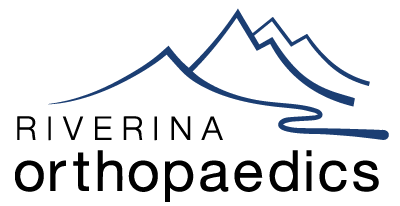Foot and ankle surgery is a specialised area of orthopaedic surgery. The surgery can be quite challenging and every patient is different with unique needs and goals.
You will need to follow instructions, perform appropriate exercises, and modify your activities during your healing process.
This requires patience, persistence, and a desire to get better. If you are unable to complete the post-operative instructions it will affect your results and you should consider alternative treatments.
Successful results from surgery require a contribution from you
Whenever surgery is considered we always try to minimise the risks. You are already on this path by consulting an experienced orthopaedic surgeon who is a specialist in foot and ankle disorders. The body is a very complex and varied structure so although we aim for perfection, no specialist can give perfect results every time.
It is important that you read all of the information carefully. The information provided is intended to be a guide and not all inclusive. If you have any questions, concerns, or are not certain about the benefits, risks, limitations, or alternatives to your treatment, please do not hesitate to ask your surgeon.
Pain Management
A local anaesthetic block may be given to you during surgery. This will produce numbness around the nerves in the region of your surgical procedure. It will provide you with pain relief for approximately 12-18 hours post-operatively, enabling you to be comfortable and allow sleep after your surgery. It will also allow time to take some of your oral painkillers prior to the block wearing off and prevent a sudden onset of pain.
It is best to take your painkillers regularly for the first 1-2 weeks. Initially, prescription medication is usually necessary and after the initial 2-3 days, regular Panadol or Panadeine is usually all that is required.
It is also worthwhile taking pain killers prior to your first post-operative visit to ensure that plaster and suture removal is more comfortable.
Remember, pain is better managed if you get on top of it before it gets on top of you
Dressings & External Pins
You should leave your dressings intact until your next appointment (unless you have had an arthroscopy or plantar fascia release in which case you can then remove the bulky dressings on day 3). This minimises the risk of infection. You will need to use a water-tight bag on top to cover the area while showering. If your dressings get wet, call the rooms and we will arrange for the dressings to be changed.
If part of your wound continues to ooze, this usually only requires regular dressing changes. If you have any concerns, please contact the rooms prior to commencing any antibiotics.
Similarly, if the pins used to straighten your toes are knocked, it is unusual to do any damage. However if the toe becomes deformed or there is prolonged pain then contact the rooms.
Swelling
Swelling often increases over the first 6 weeks and then usually reduces over the next 6 weeks. Depending on the nature and magnitude of the surgery, it may take up to 12 months to fully settle. This is the normal way the body heals. Rest and elevation is helpful. As the foot swells it is common to have stiffness and mild nerve pain so attention to swelling is important.
Exercise
While you are resting it is important to do gentle range of motion and strengthening exercises. This promotes blood flow, muscle strengthening, and prevents joint stiffness. The exercises given to you by your surgeon or physiotherapist are designed to assist with your rehabilitation and to gain the best results after surgery.
However, do not over do it. Too much too early can be just as bad as not doing enough. This includes sport. Your surgeon is happy to liaise with your trainers to get you back on the field as quickly as possible without compromising your recovery process and long term health.
Complications
Fortunately complications are quite uncommon. Nevertheless they do occur and you need to be aware of them. The following is a non-exhaustive list of some of the more frequent. You should also be aware that several factors can increase your chance of having a complication. These include smoking, diabetes, and obesity. You can reduce this risk by quitting smoking, good blood sugar control, and loosing weight.
Infection
This occurs when the wound is invaded by bacteria, usually from your surrounding skin. Signs you may have an infection include heat, tenderness, unusual fluid, or an odour coming from your wound. You may also have a fever or feel generally unwell. Most infections can be treated with antibiotics but more serious ones require admission to hospital and further surgery to clean out the wound.
Wound healing
Normal wound healing requires adequate blood flow and active healing cells. Being too active early after surgery causes bleeding and swelling which can cause part of the wound to open. The foot is very delicate in this respect. It is important that you rest and keep your foot elevated as much as possible for the first 7-10 days to encourage healing and discourage wound break down.
Nerves
Nerves are the electrical system of the body. It is extremely rare for nerves to be cut but nerves are commonly affected by swelling after surgery. This can cause partial numbness and sometimes burning pain. This generally resolves as the swelling subsides. In rare cases this can persist.
Stiffness
Both injury and surgery create scar tissue. Some people are prone to develop excess scar tissue. When this is combined with post-operative swelling it may lead to joint stiffness. Most of this can be addressed through good quality rehabilitation techniques and your own involvement in recovery.
Bone healing
Surgeons can only create the environment for bone healing. It is your body that performs the final joining process. This can fail if there is too much mobility (i.e. you walk on it too early) or if there are blood flow problems or infection. If the bone fails to heal it may require further surgery.
Deep vein thrombosis (DVT) & pulmonary embolism (PE)
These fortunately are very rare events but can have serious consequences. Signs you may have a DVT include swelling that is not reduced with elevation of the leg, colour changes or coldness of the toes, calf pain or tenderness. Signs you may have a PE include chest pain or shortness of breath. Seek immediate medical attention if you are concerned.
Prolonged or excessive pain
This can be a sign of a variety of complications following surgery, with many mentioned previously. On very rare occasions a chronic regional pain syndrome can develop in addition to these and require further prolonged management.
Anaesthetic (general, spinal, nerve blocks)
Any concerns should be discussed with your anaesthetist during the pre-operative consultation.
This page is a brief overview and not designed to be all-inclusive. If you have any further queries, please contact us.


